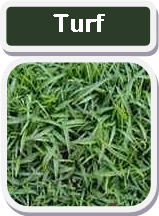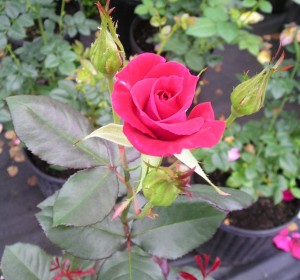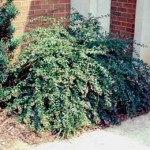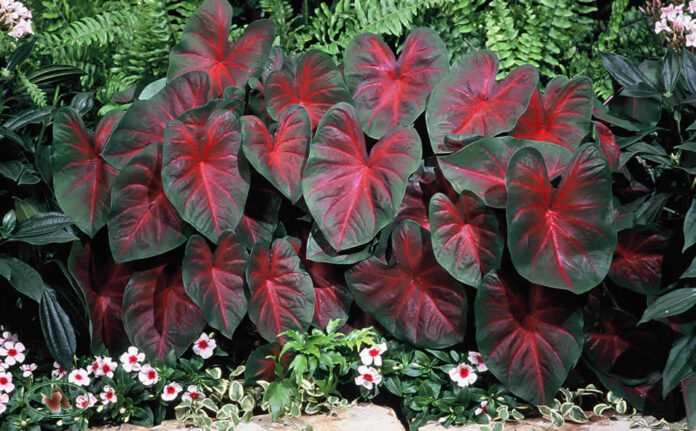Annuals
 By Mother’s Day, the soil is warm enough to plant Caladiums and Elephant Ears. Planting of warm season annuals should be completed by mid-May. This will give young, tender roots a better chance to get established before the sweltering, summer heat sets in at the end of May. Remember, don’t overwater or water too frequently as this will promote shallow root growth. The goal is to water enough to keep the annuals alive, but to stress them just a little to encourage deep root growth; this will help them survive the hot, dry summers we experience in Columbia. Continue to monitor plants for insects. Don’t cut back daffodil foliage; they need the leaves to make energy for next year’s blooms.
By Mother’s Day, the soil is warm enough to plant Caladiums and Elephant Ears. Planting of warm season annuals should be completed by mid-May. This will give young, tender roots a better chance to get established before the sweltering, summer heat sets in at the end of May. Remember, don’t overwater or water too frequently as this will promote shallow root growth. The goal is to water enough to keep the annuals alive, but to stress them just a little to encourage deep root growth; this will help them survive the hot, dry summers we experience in Columbia. Continue to monitor plants for insects. Don’t cut back daffodil foliage; they need the leaves to make energy for next year’s blooms.
Turf
 Warm season grasses have come out of dormancy and should have been fertilized. Centipede is an exception to the rule in that it prefers very low rates of nitrogen, and needs only a little phosphorus. Centipede should be fertilized with 16-4-8 in the spring and 15-0-15 in July. Other warm season grasses need a higher rate of nitrogen. Water conservatively. Grasses, too, should be stressed just enough to encourage deep root growth. Water early in the day to keep fungal diseases to a minimum. Remember to vary mowing patterns to keep ruts from developing. As temperatures rise, raise the height of the lawn mower. Keep the blade sharp, and cut no more than a third of the height of the grass to reduce stress and minimize weed invasion.
Warm season grasses have come out of dormancy and should have been fertilized. Centipede is an exception to the rule in that it prefers very low rates of nitrogen, and needs only a little phosphorus. Centipede should be fertilized with 16-4-8 in the spring and 15-0-15 in July. Other warm season grasses need a higher rate of nitrogen. Water conservatively. Grasses, too, should be stressed just enough to encourage deep root growth. Water early in the day to keep fungal diseases to a minimum. Remember to vary mowing patterns to keep ruts from developing. As temperatures rise, raise the height of the lawn mower. Keep the blade sharp, and cut no more than a third of the height of the grass to reduce stress and minimize weed invasion.
Perennials
Perennials have emerged from winter’s dormancy and need to be fertilized with a slow-release fertilizer. It’s a great time to divide and transplant many perennials, especially now that you are sure of their bloom color. Irises, Daylilies, and Cannas are good ones to divide. Continue to monitor for insects, especially aphids, in daylilies.
Roses
 Roses are in their full glory. Deadhead faded roses to encourage re-blooming. Knockout roses are vigorous growers and may need to be pruned back so they don’t interfere with sight distance or traffic. For sanitary reasons, keep pruners sharp and clean. Older varieties of roses may need to have older canes pruned out to encourage new canes to develop. Most roses are heavy feeders, so be sure to apply water soluble fertilizer on a regular basis in addition to slow-release fertilizers. Regularly inspect roses for spider mites and aphids.
Roses are in their full glory. Deadhead faded roses to encourage re-blooming. Knockout roses are vigorous growers and may need to be pruned back so they don’t interfere with sight distance or traffic. For sanitary reasons, keep pruners sharp and clean. Older varieties of roses may need to have older canes pruned out to encourage new canes to develop. Most roses are heavy feeders, so be sure to apply water soluble fertilizer on a regular basis in addition to slow-release fertilizers. Regularly inspect roses for spider mites and aphids.
Shrubs
 By now, all deciduous shrubs have leafed out. Loropetalums have finished blooming and can be cut back. It’s not too late to cut back azaleas if needed. Spireas are in bloom, as are Abelias, Indian Hawthorns, and ligustrums. It’s OK to prune back the ligustrums, hollies, and Indian Hawthorns once they are finished blooming. Abelias will continue to bloom throughout the summer, and if pruned, will shoot out wildly. It is best to prune abelias by individual branches rather than a shearing approach. Better yet, do not prune abelias at all and let them maintain their natural weeping shape. Severely limit watering established shrubs. They should have a large enough root system to survive hot, dry weather. Newly planted shrubs will need irrigation for the first two years. Monitor shrubs for insects and diseases.
By now, all deciduous shrubs have leafed out. Loropetalums have finished blooming and can be cut back. It’s not too late to cut back azaleas if needed. Spireas are in bloom, as are Abelias, Indian Hawthorns, and ligustrums. It’s OK to prune back the ligustrums, hollies, and Indian Hawthorns once they are finished blooming. Abelias will continue to bloom throughout the summer, and if pruned, will shoot out wildly. It is best to prune abelias by individual branches rather than a shearing approach. Better yet, do not prune abelias at all and let them maintain their natural weeping shape. Severely limit watering established shrubs. They should have a large enough root system to survive hot, dry weather. Newly planted shrubs will need irrigation for the first two years. Monitor shrubs for insects and diseases.
Trees
 Keep mowers and string trimmers away from trunks and roots of trees. There should be a six foot diameter of mulch around a tree to prevent the grass and weeds from growing too close to a tree. Never volcano mulch; only a 3” or 4” layer is needed. Continue to water newly planted trees throughout the warm weather.
Keep mowers and string trimmers away from trunks and roots of trees. There should be a six foot diameter of mulch around a tree to prevent the grass and weeds from growing too close to a tree. Never volcano mulch; only a 3” or 4” layer is needed. Continue to water newly planted trees throughout the warm weather.
Now through the end of August is the best time to plant palm trees. They need well-drained soil and full sun. Palms may need to be staked, but never nail anything into the palm. Use a board and banding system of support. Remove after one year. Older leaves of palms die out naturally and will need to be pruned out to encourage new palm fronds. Palms are heavy feeders. In addition to a slow release palm fertilizer, palms can benefit from a monthly feeding of Epsom salts which provides magnesium.





